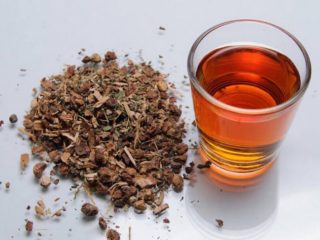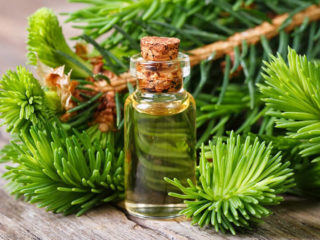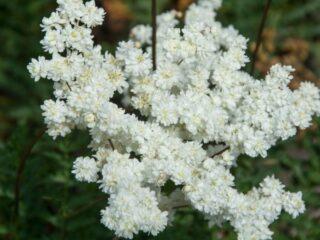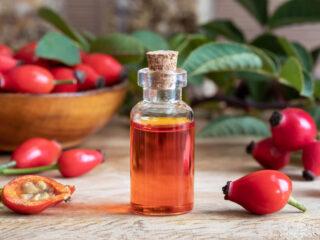Content
Meadow sage is a common plant that is used for medicinal purposes. Helps with colds and inflammation. It is used to treat skin and many other diseases. A description of this plant and its healing properties can be found in the presented article.
Description of meadow sage
Wild meadow sage (Salvia pratensis) is a perennial herbaceous plant from the genus of the same name, belonging to the Lamiaceae family. It also includes other types of sage, for example, white, common, and medicinal. Moreover, they are often called in Latin, for example, salvia meadow.
Meadow sage is a medium-height plant. Depending on weather conditions and soil fertility, it reaches from 30 to 70 cm. The stems are straight, of a simple type. The lower leaves are oblong or ovoid in shape. Other plates can be round or heart-shaped. Their length varies greatly and can reach 5-15 cm, and their width - from 2 to 7 cm. The edges are crenate or finely toothed.
The upper surface of the leaves is bare or with barely noticeable pubescence, and on the underside it is well defined. The color is rich green, the surface is matte and wrinkled. The petioles of meadow sage leaves are long.

Meadow sage blooms all summer long
The inflorescences of the plant are represented by simple whorls. The flowers are small, purple in color, but also come in pink and white. The pedicels are very short - no more than 5 mm. The calyxes are bell-shaped, reaching about 1 cm in length. The upper lip is shorter than the lower lip and has a semi-circular shape.
Meadow sage is found everywhere in Europe, but in Russia - only in the European part. The plant is especially often found in the Black Earth Region, for example, in Belgorod, Voronezh. Tambov regions.
It is also registered as a potentially vulnerable species in Belarus. Protective actions against this plant are also being taken in Latvia.
When does meadow sage bloom?
The plant blooms for a significant part of the season - the first buds open in May, and the last in August. From June to September, the fruits of meadow sage are formed - spherical nuts with three sides. They reach only 2 mm in diameter and are brown in color.
The difference between meadow sage and medicinal sage
Externally, meadow and medicinal sages are very similar, but meadow sage does not have such pronounced medicinal properties. However, it can also be used for medical purposes. In terms of appearance, the plants are very similar
Minor differences between medicinal and meadow sage can be determined from the photo and description:
- The foliage of the meadow type has more pronounced denticles.In addition, they do not smell as strong, and the flowers do not give off any smell at all.
- The medicinal type also has serrated leaves, but not so sharp. Its flowers give off a rich aroma and the foliage has a stronger scent.
Composition and properties of meadow sage
The leaves, stems and flowers of the plant contain quite a lot of useful compounds:
- essential oil;
- phytoncides;
- rosmarinic acid;
- flavonoids;
- estrogen-like compounds;
- tannins;
- bitterness;
- resins;
- saponins.
Thanks to this, meadow sage has a complex effect on the body:
- antibacterial;
- anti-inflammatory;
- tonic;
- expectorant;
- antispasmodic;
- diuretic;
- astringent;
- pain reliever;
- hemostatic;
- wound healing.
Meadow sage is used as an aid in the treatment of various diseases. These are cough, pathologies of the digestive system, bronchitis, sore throat, gingivitis. Herbs are used to treat neuroses, scabies, scrofula and stomatitis. Nutrients help lower blood pressure, so herbal tea can be recommended for hypertensive patients.
Applications of meadow sage
Meadow sage is not used in folk medicine as often as its medicinal form. However, it also has healing properties, so it is used for oral and external treatment.
For skin diseases
The plant is prescribed for the treatment of skin diseases - inflammation, itching, wound healing and rapid restoration of epidermal tissue. Infusions also help with infectious pathologies, mosquito bites, bees and other insects.Another area of application is for acne, rashes and pimples.
The fact is that the components of sage help regulate fat metabolism, so that the skin produces less sebum. Therefore, regular washing of the face with infusion leads to a reduction in the number of acne and suppression of inflammatory processes.
For treatment, use a decoction of meadow sage, which can be prepared according to the following recipe:
- Take a tablespoon of dry raw materials.
- Pour half a glass of boiling water.
- Leave covered for an hour or longer (you need to wait until it cools down to normal temperature).
- Strain and add apple cider vinegar in a volume of 50 ml.
- Wipe your skin daily using clean cotton pads. This can be done in the morning and evening.

Meadow sage decoction can be used externally and internally
 In dentistry
In dentistry
Meadow sage can be used to treat stomatitis, gingivitis, and gum inflammation. A decoction is also prepared for this; the recipe consists of several steps:
- Take two tablespoons of raw materials.
- Pour a glass of boiling water.
- Leave covered until completely cool.
- Then strain and add a teaspoon of honey.
- Rinse your mouth 2-3 times a day, using the entire prepared volume.
During the season, you can use sage in other ways. Take a fresh sheet and wipe the surface of the teeth. This is the prevention of caries and other bacterial diseases. You can repeat the procedure in the morning and evening after brushing your teeth. After this, it is advisable not to eat or drink for at least half an hour.
For a cold
There is another way to use meadow sage - to treat colds. To do this, take the essential oil and add a few drops to a small volume of water. Take 3-4 times a day.You can also prepare a decoction according to the recipes presented above and gargle for sore throat, to treat cough or bronchitis.
If you have the flu, then at its initial stage you should not use meadow or medicinal sage. The fact is that it slightly dries out the surface of the mucous membrane of the bronchi, alveoli and other respiratory tracts. As a result, the cough may become dry, the mucus will stop coming out, and it will be more difficult to treat.
Contraindications for use
When using meadow sage, like other plant species, existing contraindications should be taken into account:
- individual intolerance to any component;
- allergic reactions;
- pathologies of the thyroid gland;
- epilepsy;
- pyelonephritis in the acute stage;
- increased concentration of the hormone estrogen, for example, with endometriosis;
- pregnancy period (all trimesters);
- lactation period.
Moreover, some contraindications are not strictly specific. So, during pregnancy and even during feeding, it is allowed to use decoctions of meadow sage. But only in small quantities and externally. If you suspect an allergy, self-medication is unacceptable - you should first consult a doctor.
Features of cultivation
Meadow sage can be grown from seeds; for this, seedlings are first obtained. Work will begin at the end of February. The seeds are treated with a 1% solution of potassium permanganate for 20 minutes.

Shoots appear in 5-7 days
Standard growing instructions:
- Make a fertile mixture of garden soil, peat, humus and sand in a ratio of 2:1:1:1.
- Mix the seeds with sand and spread evenly over the soil without covering them with soil.
- Moisten well and cover with film.
- Water and ventilate regularly.
- Grow in a well-lit, warm place (permissible temperature from 20 to 25 degrees).
- After the appearance of 3-4 leaves, dive into separate containers.
- After a few days, water with a solution of complex fertilizer.
- In mid-May, meadow sage seedlings are transplanted into open ground.
The plant is easy to grow because it is drought-resistant and does not need frequent feeding. Watering is given as needed so that the soil does not dry out or crack.
When growing meadow sage from seeds in the Urals, Siberia and other frosty regions, you need to keep in mind that the plants must be prepared for winter. To do this, in October they are cut flush with the soil and covered with dry leaves, sawdust or other mulch. After snow falls, a small slide is formed above the flowerbed.
Blank
Meadow sage begins to be harvested at the moment when the maximum concentration of useful substances is observed in its leaves. In central regions, work should begin in early June. Collection is carried out in dry weather. It is necessary to choose only those plants that have healthy, rich green foliage and purple flowers.
After collection, the inflorescences and leaves are separated, the remaining parts can be discarded. They are laid out in one layer and dried under a canopy or indoors without access to direct sunlight. Turn over periodically.
After a few days, the stems are tied together and left hanging or placed in natural fabric bags or paper envelopes. Can be crushed and poured into clean, completely dry jars. Store at room temperature and moderate humidity.
Conclusion
Meadow sage can be used for medicinal and decorative purposes.The plant is grown in flower beds, to decorate paths, garden borders, and in compositions with different flowers. It is also used for medicinal purposes. But for greater effect, it is better to use officinalis sage.

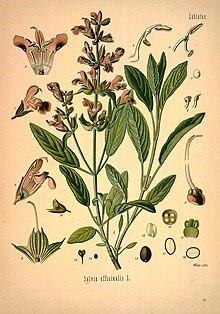
 In dentistry
In dentistry